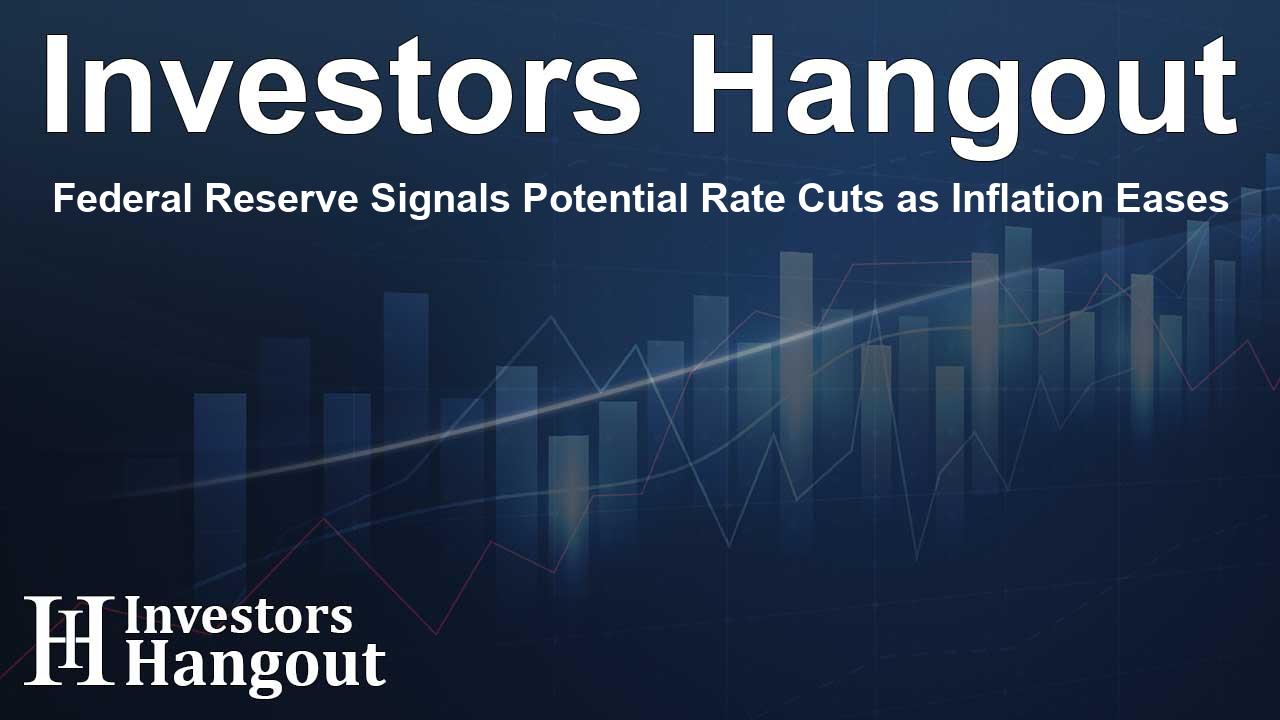Federal Reserve Signals Potential Rate Cuts as Inflation Eases

Federal Reserve Signals Potential Rate Cuts as Inflation Eases
In a notable shift, the recent inflation figure reported at 2.5% indicates the Federal Reserve might be ready to cut interest rates in their upcoming meeting. As the inflation rate hits the lowest point seen in over three years, economists are interpreting this as a positive signal for economic policy adjustments.
Understanding the Current Inflation Climate
With inflation figures showing a dip from 2.9% in July, there's a clear indication that the economic landscape is shifting. This significant drop has led many experts, including Chris Zaccarelli, the Chief Investment Officer for Independent Advisor Alliance, to state that the Fed is cleared for action.
Zaccarelli noted, "All clear for launch," emphasizing that a cut of 25 basis points is expected due to results aligning with economic predictions. Although some observers may have anticipated a more substantial cut, it appears that a gradual approach is in the works instead of drastic measures.
Key Insights on Inflation Trends
Several key points emerge from the recent Consumer Price Index (CPI) data: First, a month-over-month inflation increase of 0.2% in August maintained consistency with July figures, giving no cause for alarm. Furthermore, while the energy index experienced a slight decline by 0.8%, the shelter index saw a modest gain of 0.5%, contributing to overall economic stability.
Interestingly, core inflation remained unchanged at 3.2% year-over-year. This suggests that while certain sectors are experiencing fluctuations, the broader economic indicators remain stable and predictable.
The Road Ahead for Monetary Policy
Looking ahead, economists like Quincy Krosby from LPL Financial suggest that the Fed is likely to choose a path of minimal cuts, potentially around 0.25% instead of more aggressive reductions. This careful strategy can be attributed to a desire to closely monitor economic growth while addressing inflation that gradually approaches the target rate set by the Fed of 2%.
The Implications for Interest Rates
The current landscape has led the Federal Reserve to reassess its strategies. With three meetings left in the year, there's a significant focus on balancing inflation control with employment stability. Jeffrey Roach, another key economist from LPL Financial, expressed that the Fed is keen on weighing these factors closely as the labor market shows signs of softening.
The sentiment in bond markets reflects this cautious optimism; yields, particularly on the ten-year Treasury, have seen slight increases, indicating that investors are anticipating changes in the near future. However, with two-year and ten-year yields trending downwards, the overall market maintains a deflationary outlook.
Outlook for the Rest of the Year
As the economic landscape evolves, the Fed will continue to face challenges stemming from both domestic factors and global economic conditions. Guidance suggests that as inflation continues to stabilize, the Fed will have the flexibility to implement slower, measured cuts. This will ensure that any potential impacts on the labor market are handled with due consideration.
Furthermore, analysts are closely observing how these decisions influence the broader economy and investor sentiments. With potential changes on the horizon, 2024 could see the Federal Reserve navigating through complex economic indicators while striving to maintain a balance between inflation control and economic growth.
Frequently Asked Questions
What is the current inflation rate reported by the Federal Reserve?
The current inflation rate is reported at 2.5%, as of the latest Consumer Price Index data.
What actions is the Federal Reserve expected to take regarding interest rates?
The Federal Reserve is anticipated to cut rates by 25 basis points in the upcoming meeting due to the latest inflation figures.
How has the bond market reacted to recent inflation data?
The bond market has shown slight upticks in the ten-year Treasury yields, indicating investor sentiment about potential rate changes.
What focus areas will the Federal Reserve consider moving forward?
The Federal Reserve will focus on balancing inflation control with stability in the labor market as economic conditions evolve.
Why might the Fed choose a slower approach to rate cuts?
A more cautious approach allows the Fed to monitor the economic landscape effectively, ensuring that cuts are made while considering potential impacts on employment and economic growth.
About Investors Hangout
Investors Hangout is a leading online stock forum for financial discussion and learning, offering a wide range of free tools and resources. It draws in traders of all levels, who exchange market knowledge, investigate trading tactics, and keep an eye on industry developments in real time. Featuring financial articles, stock message boards, quotes, charts, company profiles, and live news updates. Through cooperative learning and a wealth of informational resources, it helps users from novices creating their first portfolios to experts honing their techniques. Join Investors Hangout today: https://investorshangout.com/
Disclaimer: The content of this article is solely for general informational purposes only; it does not represent legal, financial, or investment advice. Investors Hangout does not offer financial advice; the author is not a licensed financial advisor. Consult a qualified advisor before making any financial or investment decisions based on this article. The author's interpretation of publicly available data shapes the opinions presented here; as a result, they should not be taken as advice to purchase, sell, or hold any securities mentioned or any other investments. The author does not guarantee the accuracy, completeness, or timeliness of any material, providing it "as is." Information and market conditions may change; past performance is not indicative of future outcomes. If any of the material offered here is inaccurate, please contact us for corrections.